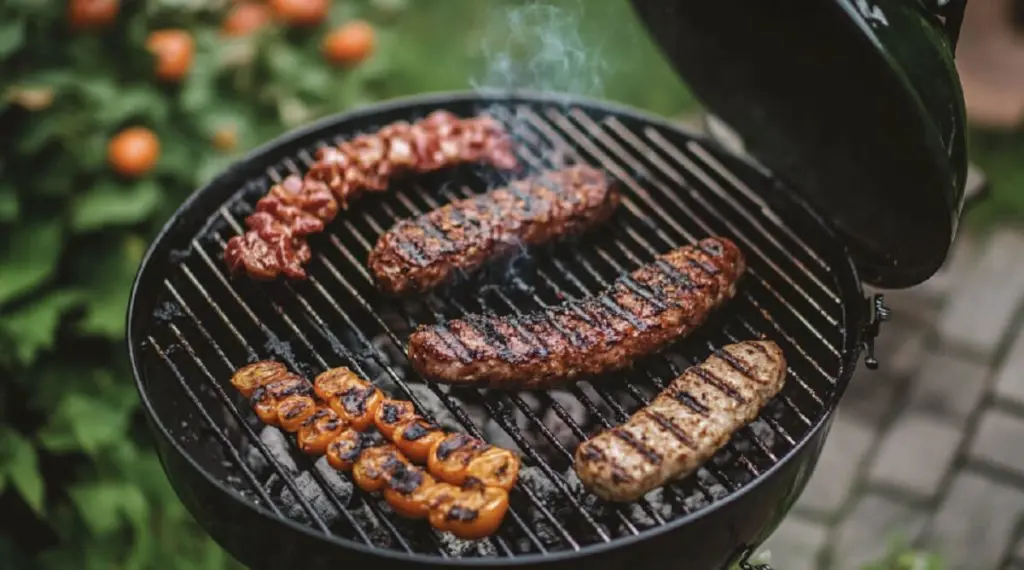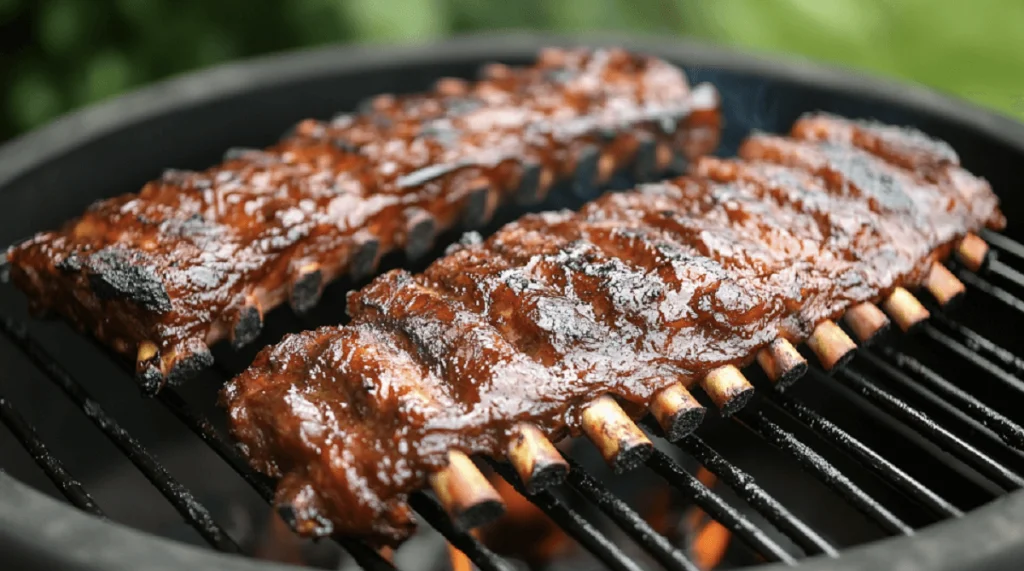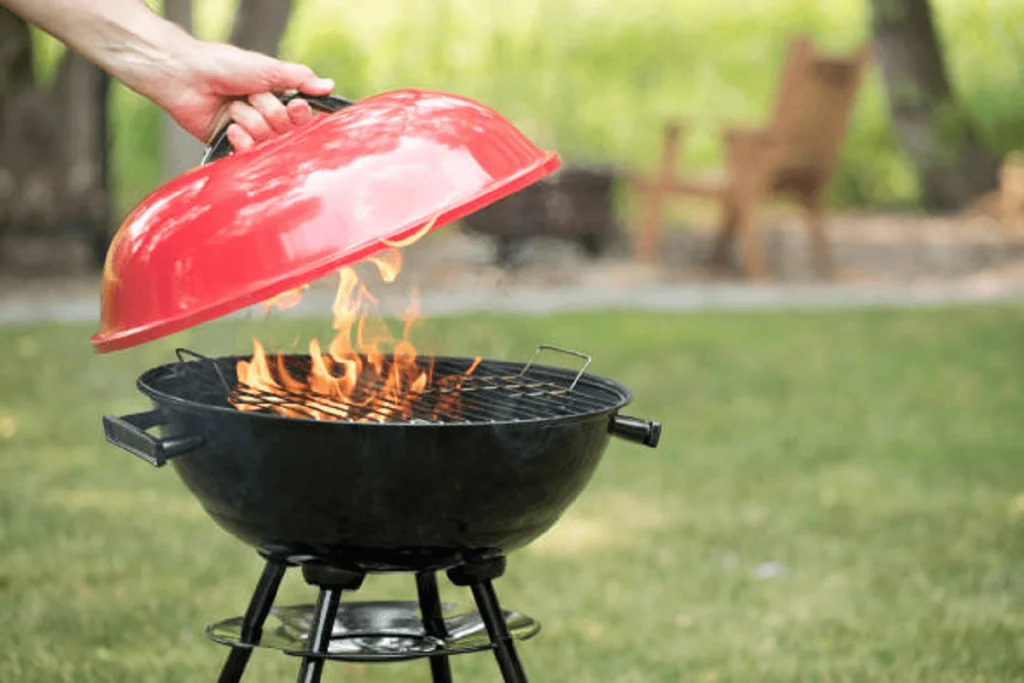Have you just bought the VEVOR 53” Heavy Duty Charcoal Grill and don’t know what to do with it? Or are you curious about how you can enjoy a variety of BBQ meals from brisket to ribs, fish, and turkey but don’t know where to start?
This is the ultimate guide on how to use a Charcoal grill.
Here, you’ll learn that there’s more to the VEVOR Charcoal Grill than just making rib-eye steaks. But even better are the unique features, such as temperature control and multi-layered trays that allow different kinds of cooking.
You can grill, sear, and roast, directly or indirectly, on this outdoor charcoal grill. It’s ideal for beginners and pros alike because of its easy-to-use, portable design.
So, are you ready to learn how to work a charcoal grill?
Table of contents
Getting Started: Setting Up Your Charcoal Grill
We’ll start with a glance at the types of charcoal grills, then choose the right charcoal, and end with preparing the grill.
Types of Charcoal Grills
Kettle Grills

It looks like a kettle with its round shape standing on three or four legs. It has a removable lid covering the grilling grate and an air vent by the ash compartment for smoke to escape.
Barrel Grills
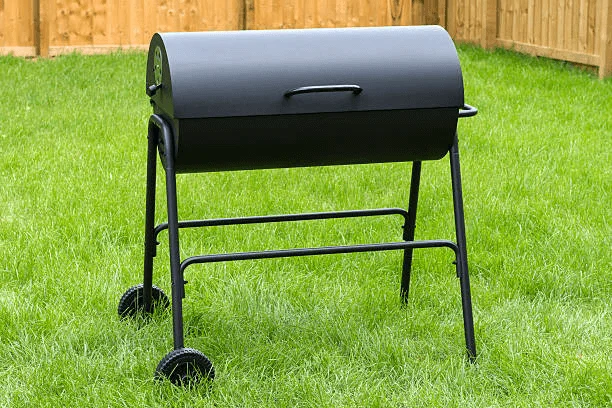
It’s a larger grill with a cylindrical body like a barrel, making it perfect for indirect cooking. If you have large batches or cuts of meat or fish to grill, this is the best option.
Ceramic Grills
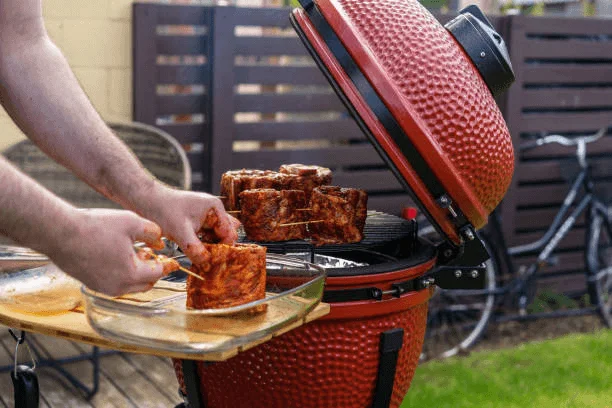
This grill, a.k.a. Kamado grill is made of ceramic and allows heat retention in its dome-shaped body. Although it’s typically smaller than the other two types, its ability to hold moisture allows even cooking.
So, which type is the VEVOR charcoal grill? It’s all three! Although it has a barrel grill shape, this portable outdoor BBQ grill retains heat and moisture.
Choosing the Right Charcoal
There are two types of charcoal to choose from based on your grilling needs.
Lump Charcoal vs. Briquettes – Which is Better?
Lump charcoal is made from charred hardwood logs, so it burns fast and evenly with less ash, making it best for searing. Meanwhile, briquette is charcoal formed from scrap wood and binders, giving them a longer burn time and being ideal for slow cooking.
Preparing the Grill
Follow the instructions in the VEVOR grill setup manual when you’re ready to start cooking outdoors. After setting up, dust the grates with a clean microfiber cloth or cotton kitchen napkin. Lay your charcoal in the chimney and set the grate over it.
How to Light a Charcoal Grill
It’s time to light your charcoal grill. Check that the charcoal isn’t above the chimney fill line, and then choose your fire-starting method.
The Best Methods for Lighting Charcoal
You can use a chimney starter, lighting fluid, or lighter fluid.
- Chimney Starter: This is a small device that uses gas to ignite a fire. It leaves no residual taste, has zero flare-ups, and produces little ash.
- Lighter Fluid: This is a commercial liquid made with fire-starting chemicals. Although they catch fast, it’s not ideal because the fluid will taint your food taste. Also, it’s not healthy for long-term use.
- Electric Starters: It’s a hot rod like a boiling ring that runs on electricity. Once you plug it into the power source, you’ll place the metallic part in our coal until it starts burning. It’s quick and produces less smoke but could have a short cord.
We recommend Chimney starters as the most suitable lighting method for VEVOR charcoal grills.
How to Arrange Charcoal for Different Cooking Methods
Before starting your fire, you must decide on a charcoal arrangement.
Direct vs. Indirect Heat Zones

If you can’t choose between direct or indirect heat, the ring placement is the best option. Form a ring with your charcoal and leave the center empty so that the perimeter gives direct heat while the center cooks with indirect heat.
Cooking Style: Searing vs Slow Cooking
You can also use the two-zone placement and pile your charcoal on one side. Use the direct heat side for searing, caramelization, and making grill marks, while the indirect heat zone helps with slow cooking.
Mastering Temperature Control of Charcoal Grill
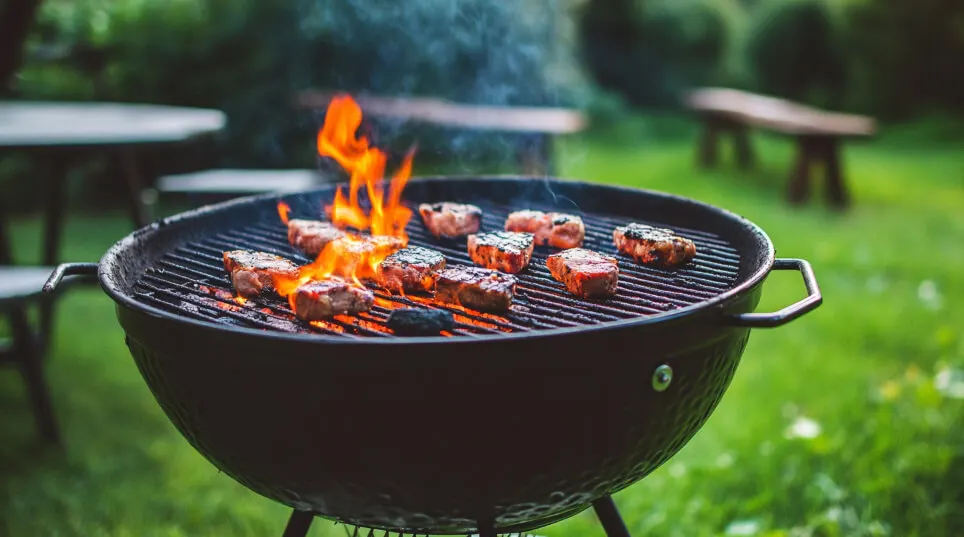
It’s a good thing that the VEVOR charcoal grill has smart temperature control knobs. But if you’re working a grill without temp controls, here’s what you can do —
Managing Airflow and Vents
Manually adjust the vents to control the temperature in the grill. If it’s a quick grill, remove the lid but cover it for slow cooking. Grilling with the lid ensures an even spread of fire and more indirect heat.
Don’t give in to temptation and open your lid too often because then the heat will escape. Instead, allow it to cook for about 30 minutes before checking the temperature. If you run low on heat, you can feed more coal into your chimney.
Using a Grill Thermometer
Use a grill thermometer to check the internal temperature of your food to avoid undercooking or overcooking. It’s best to get an instant-read thermometer to display the exact ℃ or ℉.
Some standard internal temps for food include 165℉ for Chicken pieces, 160℉ for Pork, 120℉ extra rare steak, and 170℉ for well-done beef.
Also, set your grill to these temperatures for the best result — 350℉ – 450℉ for chicken, 400℉ for Hamburgers, 400℉ for Salmon, and 650℉ for high-heat cooking.
Recommended For Your Project
How to Cook with a Charcoal Grill
Now, you’re on track to learn how to cook with a charcoal grill, so let’s get straight to business.
Direct Grilling: The Perfect Sear
Let’s start with making the perfect sear on direct heat. This method is perfect for BBQ steaks, burgers, hotdogs, salmon, and tuna steak.
Step-by-Step Guide to Achieving the Perfect Sear
Step One: Arrange your charcoal for direct heat and set your VEVOR BBQ grill temperature to 400℉.
Step Two: Prepare the grate by rubbing it with butter and cooking it with margarine or oil. Use a light hand to ensure the caramelization stays even.
Step Three: Place your prepped food, whether it’s meat, burger, hotdogs, or fish, on the direct heat and let it cook. Don’t flip or lift it until you hear the sizzling sound and see it browning on the edge. Once it’s ready, it’ll be easy to flip without sticking to the grate.
Step Four: Flip and wait for the same result from step three.
Step Five: Move your seared food from the direct heat onto the indirect heat.
Indirect Grilling: Slow and Steady Wins the Race
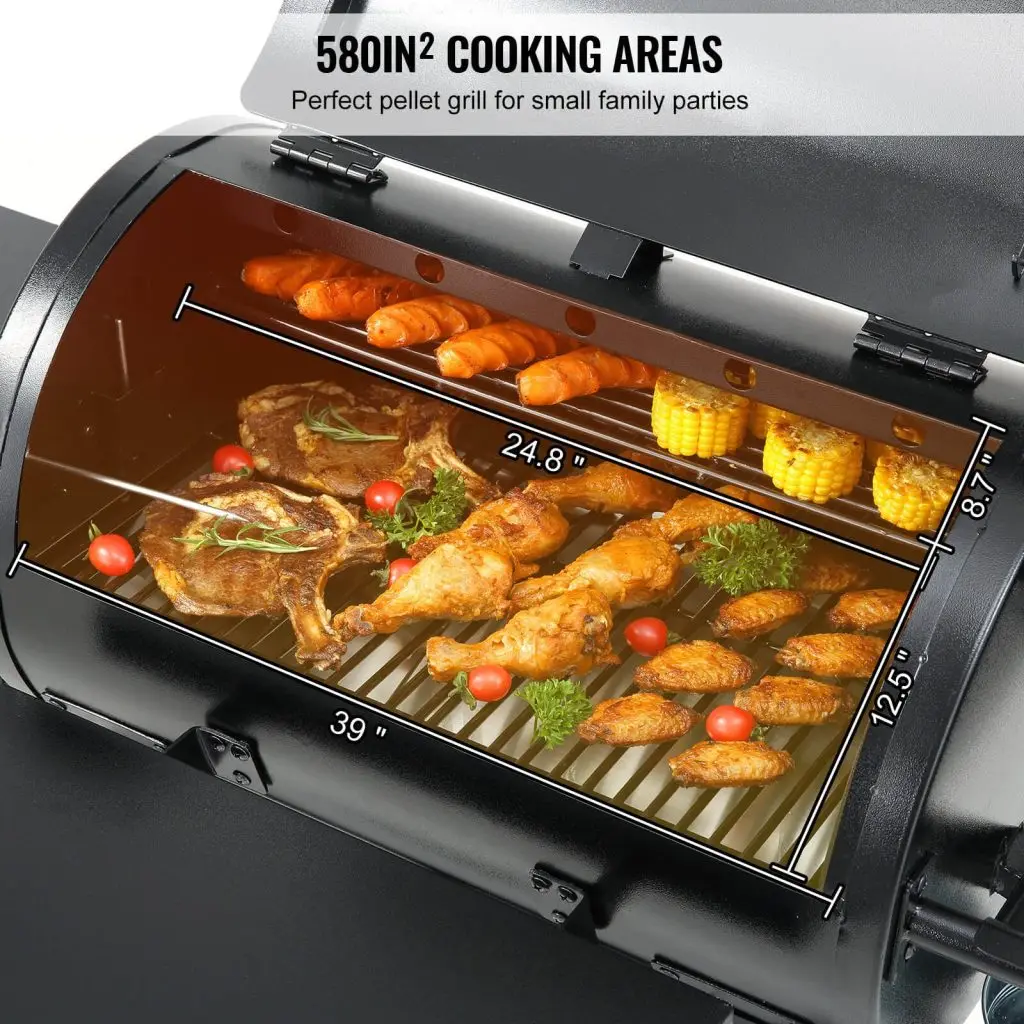
When it comes to slow and steady cooking, indirect grilling is the best. Use this method for your ribs, whole chicken, turkey, and more. Because the VEVOR charcoal grill is a multilayer cylinder, slow cooking should be on the top grate.
How to Smoke Meat on a Charcoal Grill
If you’re smoking meat on your VEVOR charcoal grill, add one or two handfuls of wood chips to the coal for more flavor. Before adding the wood, ensure it’s food-grade quality. Use only Applewood, Hickory, or Mesquite.
Soak the wood chips in clean water for 15 – 20 minutes before adding them to the coal for slower, more flavorful burns.
Keep your grill covered to retain moisture and heat, and protect your hands with heat-resistant gloves. You can regulate the temperature with the knobs on the grill, and rest assured that your VEVOR 53” charcoal grill will maintain your chosen temp for however long you need.
How to Use a Charcoal Grill: Tips and Tricks
Do you still need more tips and tricks on how to use a charcoal grill? We’ve got you!
Enhancing Flavor with Marinades and Rubs
Would you need a rub or a marinade? Let’s discuss the difference.
When to Apply Marinades vs Rubs
Marinades are liquid seasoning mixtures bonded with oil while a rub is dry. Marinades are more flavorful because the liquid seeps into the protein and breaks it down.
Meanwhile, a dry rub is a combination of ground spices used for the outer part of your protein to give it a nice crust.
Use marinades for overnight and long-time seasoning, while rubs are ideal when seasoning a few minutes before cooking. A standard marinade combines oil with acid, sugar, salt, and dry aromatic spices.
Avoiding Common Grilling Mistakes
- Overcooking: always use a grill thermometer to check the protein’s internal temperature.
- Flare-ups: Use a chimney starter to control the fire from the chimney and regulate the temperature through the air vent.
- Utensils: Use the right barbecue utensils, like BBQ forks for flipping and soft brushes for adding rubs and marinades.
- Cleanliness: Always clean your grill before and after cooking.
How to Clean and Maintain Your Charcoal Grill
Cleaning your charcoal grill is a sure way to ensure it lasts as long as VEVOR intended, so let’s talk about it.
Post-Grilling Cleanup
This is a tested and tried best practice for cleaning your VEVOR charcoal grill after use.
- Separate your grate from the grill cylinder.
- Empty your chimney of burnt ash.
- Scrape your grease trap and use a grill brush to remove residue from your grate.
- Once the grate has cooled, you can clean it properly with soapy water. Rinse it off with clean water and air dry it.
- Also, dust your empty chimney and ensure it’s clean for future use.
You can store your portable VEVOR grill by disassembling it and putting it in the package.
Long-Term Care for Your Charcoal Grill
During the off-seasons like Winter, when outdoor grilled food isn’t on the menu, you can keep your dismantled VEVOR grill indoors. Ensure all parts are clean before storage and put them in a dry, safe space.
It’s better than leaving it outdoors at the mercy of the unpredictable weather.
Conclusion
You have all the tips and tricks on how to grill on a charcoal grill like a pro! But here’s a quick recap if you skipped a few steps:
- Choose the right type of charcoal grill
- Use a chimney starter for your fires
- Create a multilayer charcoal arrangement
- Season your protein and use wood chips for more flavor
- Clean your grill before and after usage
Get the VEVOR 53” multifunctional charcoal grill, which can sear, smoke, roast, grill, bake, braise, and barbecue, all for $699.99. That’s everything you need to know. Now, you can invite your friends for a backyard BBQ cookout!

